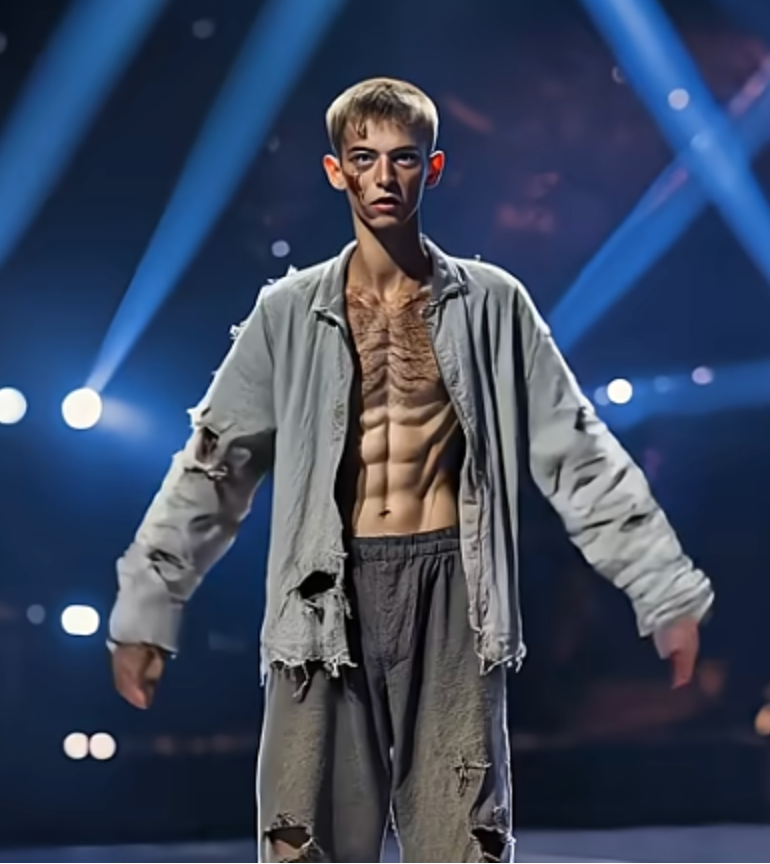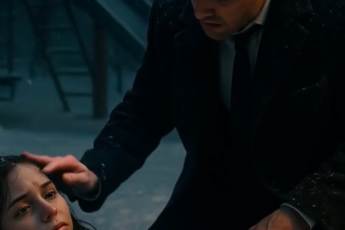The audience stirred with low chatter as a thin young man walked onto the America’s Got Talent stage. His clothes were torn and faded, his shoes scuffed. Under the dazzling stage lights, he looked small, fragile—almost out of place. The judges exchanged quick glances, unsure of what to expect.
He stood motionless for a moment, taking a deep breath, his eyes scanning the massive crowd. Then, without saying a word, he nodded to the sound technician. The lights dimmed, and a haunting melody filled the air—soft, raw, and full of emotion.
He began to move.
At first, his motions were slow and deliberate—each step looked like a struggle, as if he was fighting invisible walls around him. The audience fell quiet. His arms reached upward, trembling, before collapsing to his chest. His performance was not a simple dance—it was storytelling, spoken through the language of movement.
As the music grew stronger, his body followed—leaping, twisting, bending as though his spirit was breaking free from pain. Every gesture carried meaning. Every movement told the story of someone who had known hardship, but refused to surrender to it.
Halfway through, the lights shifted from blue to gold, and something changed. His dance turned from sorrow to strength. He began spinning faster, his body a blur of energy and purpose. The crowd gasped. His feet seemed barely to touch the ground, and yet his emotion was so real it felt as if the stage itself was alive.
There was a moment when he dropped to his knees, his hands clasped together, looking upward as the music softened again. It was as if he was praying—not for success, but for understanding. In that silence, every person in the room felt something deep inside—hope, compassion, and respect.
When the final note played, he froze in place, head bowed. For a moment, no one moved. Then, slowly, the audience began to rise. The applause was thunderous, but the young man didn’t react. He simply looked up, his eyes glistening with quiet gratitude.
One of the judges leaned into the microphone. “You walked on this stage as a boy people didn’t notice,” she said softly. “But you leave it as an artist we will never forget.”
He smiled for the first time—a small, genuine smile that said more than words ever could.
Later, backstage, someone asked him what inspired his performance. He replied, “I wanted to show that no matter where you start in life, your heart can still dance. Pain can be turned into art. That’s what saved me.”
And in that moment, his story became more than a performance. It became a message—a reminder that strength doesn’t always roar; sometimes, it whispers through movement and grace.
That night, he didn’t just earn applause. He earned something far greater: respect, love, and a place in the hearts of everyone who saw him turn struggle into beauty.






